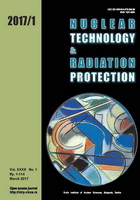
LOCAL PROBABILITY OF INDOOR RADON CONCENTRATION TO EXCEED THE THRESHOLD ESTIMATED FROM GEOGENIC RADON POTENTIAL
Pages: 70-76
Authors: Peter BossewAbstract
Indoor radon has been recognized as an important air pollutant. Based on epidemiological evidence, it is estimated that indoor radon is the second cause of lung cancer after smoking. As a consequence, one tries to limit exposure through regulations concerning the remediation of the existing and prevention of future exposure. In this context, an essential task is the delineation of areas in which it can be expected with certain confidence that time-averaged indoor radon concentrations in dwellings and workplaces exceed the reference level. These are called radon priority areas to denote that these are areas in which remedial and preventive action has to be implemented with priority. There are different definitions of radon priority areas and different methods to estimate them from data. In Germany, the current approach uses the geogenic radon potential as the predictor. However, legal reference levels pertain to indoor radon concentration, not to the geogenic radon potential. One therefore has to identify derived reference levels for geogenic radon potential through statistical association of both quantities.
This paper presents a method to derive the local probability that indoor radon concentration exceeds a threshold, given the local geogenic radon potential. The relationship can be used to derive geogenic radon potential reference levels which in turn serve to define radon priority areas.
Key words: indoor radon, geogenic radon, radon priority areas
FULL PAPER IN PDF FORMAT (1.29 MB)
